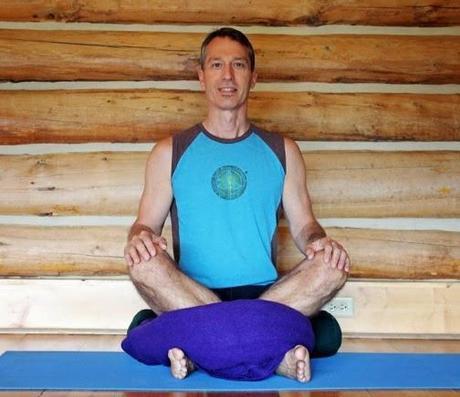 Last week, our resident physical therapist and yoga teacher Shari Ser began a discussion about learning how to sit well on the floor. While sitting on the floor is frequently the first position we take in most modern yoga classes, there is often little attention given to the various ways we can sit comfortably either at the start of a class or for home meditation practice. So if you did not have a chance to get to it last week, I suggest you read Shari’s post now (see Learning to Sit on the Floor), with special attention to the last half of the post that covered yoga poses to strengthen the supporting muscles of the spine and back, as well as ways to improve flexibility of the spine, especially in the area of the rib cage.
Last week, our resident physical therapist and yoga teacher Shari Ser began a discussion about learning how to sit well on the floor. While sitting on the floor is frequently the first position we take in most modern yoga classes, there is often little attention given to the various ways we can sit comfortably either at the start of a class or for home meditation practice. So if you did not have a chance to get to it last week, I suggest you read Shari’s post now (see Learning to Sit on the Floor), with special attention to the last half of the post that covered yoga poses to strengthen the supporting muscles of the spine and back, as well as ways to improve flexibility of the spine, especially in the area of the rib cage. Today I’m going to address a follow-up question one of our readers left on Shari’s post:
Something missing for me here: I can't sit cross-legged because my knees won't go down and my ankles can't stand the bend caused by knees less than halfway to the floor. I couldn't do this even when I was young, flexible, and lean. Help?This reader highlights a reality that many of my students encounter when trying to take a comfortable seat in yoga: their bodies don’t allow them to sit easily in cross-legged position, not due to lack of work on the poses that can open and strengthen them to improve their ability to sit, but due to structural realities of their bodies. It turns out some people’s skeletons and connective tissue just don’t permit enough movement—particularly in the hip joint—to allow the pelvis and femur bones (thigh bones) to take their ideal positions. This usually becomes apparent after a practitioner has spent a reasonable amount of time trying to improve his or her sitting position without seeing any changes in those joints.
So today I’m going to make some suggestions for those individuals, and I suspect many of our readers fall into that category! First, make sure you have an adequate support under your sitting bones to elevate your entire body for sitting. Shari suggested a folded blanket or pillow on a chair seat to start to get the idea of your hips being slightly higher than your knees. For challenged yogis who are sitting in Seated Crossed Legs position (Sukasana), I suggest sitting on two to three folded blankets, on a block, or on the edge of a firm bolster.
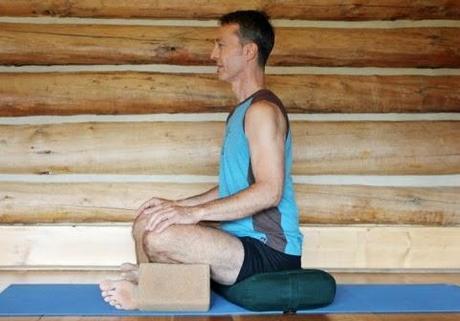
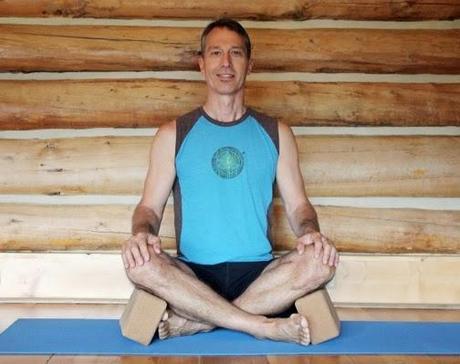

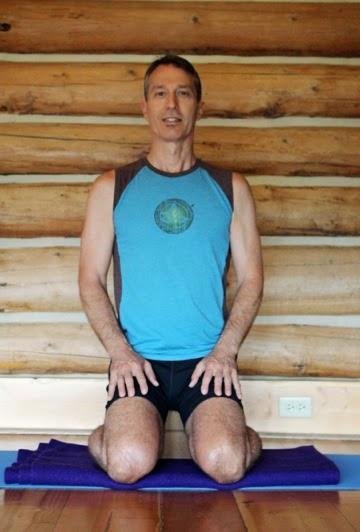
Start by placing a folded blanket on your mat to support your shins. Then kneel on the blanket, with your knees near front of blanket, and your ankles and feet hanging off the back edge. Have your knees hips-distance apart, but splay your shins a bit wider apart in back. Place a block on its lowest or middle height (or a stack of two blocks) sideways between your feet, so both sitting bones can rest on it). Then carefully sit back on the block. Adjust your pelvis, as you might move it in Cat/Cow pose, until your lower back feels like it has a nice natural arch.
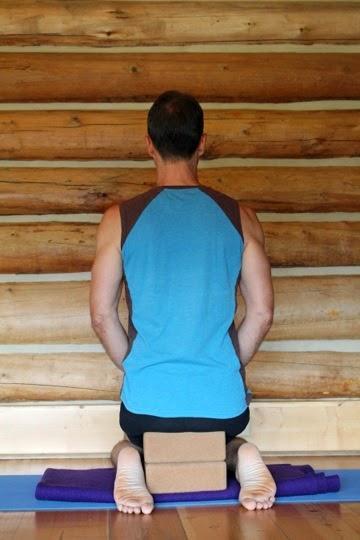
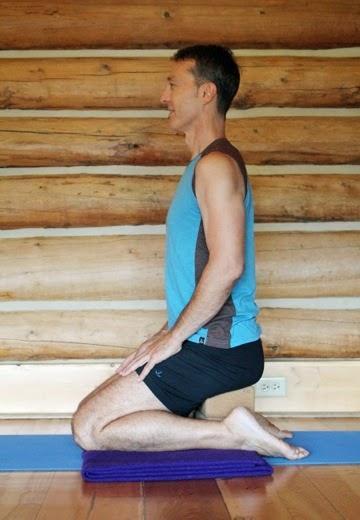
Many practitioners have ankles that are very stiff and inflexible. So if your ankles are uncomfortable in this pose, you can use an additional blanket under your ankles to relieve that tension. (To improve ankle flexibility in the long run, practice poses such as Child’s pose (Balasana) and Cobra pose (Bhujangasana) that stretch your ankles and the tops of your feet.)
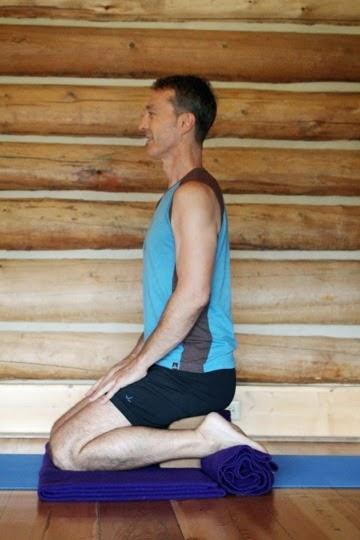
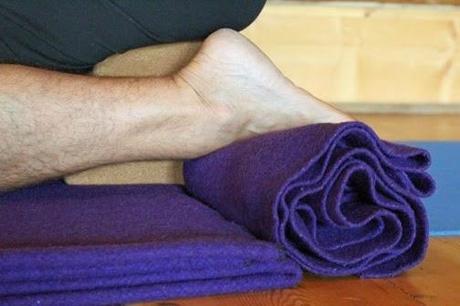
And with whichever sitting pose you choose to work on, as you build strength and flexibility in your spine with our other recommended yoga poses, add in an inner action I call the “inner lift.” This simply means that as you sit, you imagine lengthening up from your sitting bones to the crown of your head through the center of your spine. Notice how long you can maintain this feeling of inner lift before you begin to sag and lose support. Then, try to re-establish the feeling again for a while. If you start to fatigue and can no longer easily maintain your inner lift, stop for the day and note how long you sat. Try to gradually spend more time in your seated position, so that eventually you, like our reader who is preparing for his wedding, will be ready to sit for longer periods of time!
And if you do find yourself in a situation where you need to spend a long time sitting on the floor and you realize that even in your preferred position your legs are starting to go numb or you are feeling pain, switch to another seated position to give your legs a rest (switching between supported versions of Simple Crossed Legs and Hero pose works well for many of us).
Subscribe to YOGA FOR HEALTHY AGING by Email ° Follow Yoga for Healthy Aging on Facebook

